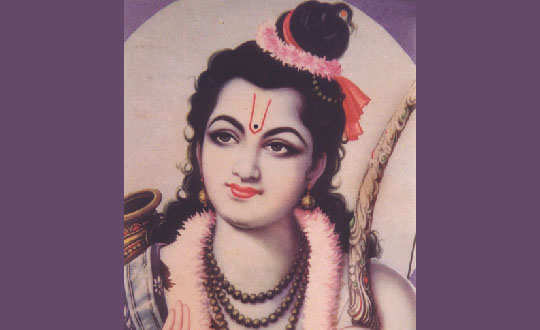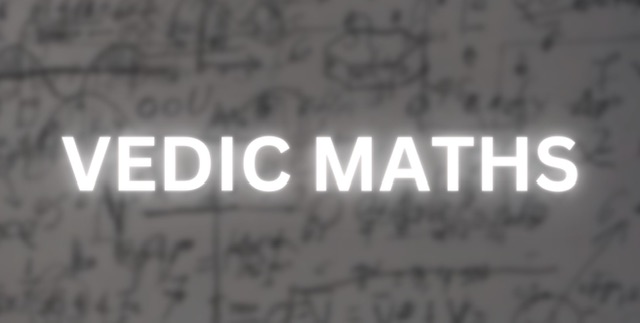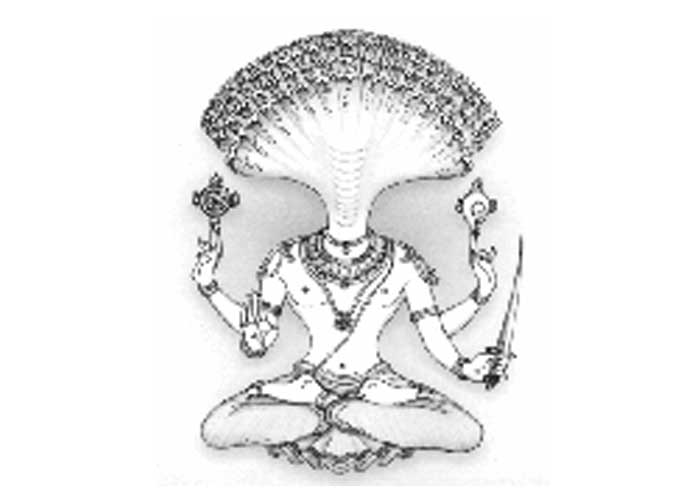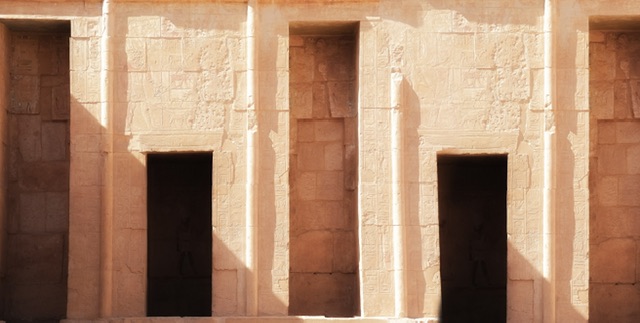We know the story of Ram through Valmiki’s Ramayana. Many take the stories from the Puranas to be mythology; I insist that they are a historical fact. Mentioned below are some evidences…
ASTRONOMICAL EVIDENCE
Maharishi Valmiki made numerous sequential astronomical references in the Ramayana on important dates related to the life of Ram indicating the location of planets vis-a-vis zodiac constellations and the other visible stars (nakshatras). By entering the precise details of these planetary configurations in the US based software ‘Planetarium Gold’, Mr. Pushkar Bhatnagar of Indian Revenue Service and author of the book, Dating the era of Lord Ram, concluded that, “There is significant information available to prove that Ram was a historical personality…Not just a stray event but the entire sequence of the planetary positions as described by Valmiki at various stages of Rama’s life can be verified today as having taken place. This information is significant, since these configurations do not repeat for lakhs of years and cannot be manipulated or imagined so accurately, without the help of sophisticated software. The inference that one can draw is that someone was present there to witness the actual happening of these configurations, which got recorded in the story of Rama.” (Times of India)
LITERARY EVIDENCE
If Ram was a mythological figure created by Rishi Valmiki, his mention would have been limited to the Ramayana. However, he is talked about in Muni Vyas’s Mahabharata at four places: Ramopakhayan, Aaranyak Parva, Drona Parva and Dashrath Kathanak; in Buddhist literature it finds mention in Dashrath Jatak, Anamak Jatak and Dashrath Kathanak; in Jain literature many manuscripts were written on Ram, like Padam Charitra by Vimal Suri; Padam Puran by Ravisen Acharya; Padam Charitra and Charitra Puran by Swambhu; and Uttar Puran by Gunbhadra. Even in other countries we can find versions of Ramayana, like the Tibetan Ramayana, Turkistan’s Khotani Ramayana, Indonesia’s Kakbin Ramayana, Java’s Seratram, Sairiram, Ramkeling, Patani Ramkatha; Indo-China’s Ramkerti (Ramkirti), Khamer Ramayana; Burma’s Ramyagan of Yuto; Thailand’s Ramkiyen etc. Some scholars also believe that Homer’s Illiad and the Dionysia of poet Nonus of Rome might also be different versions of Ramayana itself.
There is little doubt about the existence of Rishi Valmiki. His life has been chronicled in detail in Skand Puran, Bhavishya Puran and Adhyatma Ramayana. When Valmiki meets Ram for the first time, he says, “Prachetsoahem dasmey putroh raghavnandany, Ne ismarahmeanritam vakyamimo tu tav putroko” (I am the 10th son of Pracheta, and I never remember speaking even one untrue sentence) – Valmiki Ramayana 7.96.19. How could such a missionary and follower of truth have written an imaginary story of Ram?
Rishi Valmiki was a contemporary of Ram and has used the present tense in the Ramayana, not the past and future tense. Some quotes from other ancient scriptures referring to characters of Ramayana include,
Treta yuge chaturvinshe ravane tapseh shakshyat | Ram dashrtathi prapiye sagane shakyamiyeewan || (Vayu Puran 70.88)
Sandho tu samanupraptre tretayaam dwaparisya cha |Ramo daasrathirbhutva bhavishami jagatpati || (Mahabharata 348.19)
Chaturvinshe yuge chapi vishwamitra pure sare | Loke ram iti khyate tejsah bhaskaropam || (Harivansh 22.104)
Chaturvinshe yuge vats tretayaam raghuvanshaje |Ramo naam bhavishyami chaturvhayu sanatane || (Bhramand Puran 2.2.36.30)
On the basis of the given literary references it can be inferred that Ram, Ravana, Vishwamitra etc. lived in the 24th Treta Yuga.
According to Indian history, Shri Ram was the 64th ruler of Suryavansh dynasty. The names and other relevant particulars of previous 63 kings are listed in Ayodhya ka Etihaas by Rai Bahadur Sita Ram and in The Astronomical Code of the Rig Veda by Professor Subhash Kak of Louisiana University. Professor Subhash Kak has also traced out 29 descendants of Shri Ram starting with his son Kusa to the 94th ruler of Ayodhya-Brihatksaya.
ARCHAEOLOGICAL EVIDENCE
Hundreds of terracotta based on the Ramayana have been found in Haryana, Uttar Pradesh and Rajasthan depicting the major events of Ram’s exile, Ram, Sita and Lakshman’s Panchvati gaman; Maareech Mrugh (golden deer); the dialogue of Tirshira with Khar-Dushan; the execution of 14 demons by Ram; Sita-haran by Ravana; Sughreev sighting Sita throwing down her ornaments from Pushpak (Ravana’s plane); Sughreev welcoming Ram to his abode; Sughreev-Bali combat; Ram’s assassination of Bali; Hanuman burning Ashok Vatika; Trishira Rakshas’s killing; Indrajeet, the son of Ravana, going to war, etc.
GEOGRAPHICAL EVIDENCE
Researchers have gone along the route adopted by Shri Ram as narrated in Valmiki’s Ramayana and found 23 places which have memorials that commemorate the events related to the life of Shri Ram. These include – Shringi Ashram, Ramghat, Tadka Van, Sidhhashram, Gautamashram, Janakpur (now in Nepal), Sita Kund etc. In the Historical Atlas of South Asia prepared by Joseph E. Schwartzberg (1978), there are more than 20 maps giving historical as well as geographical evidence about the existence of Ram Sethu and its use as land route between India and Sri Lanka. Many disregard this bridge as a geographical phenomenon, a coral formation, which occurs in many parts of the world. However, the unique curvature of the bridge and its composition by age reveals that it is man-made and the steps followed in constructing the bridge are similar to that employed by modern day civil engineering and construction companies. Archaeological studies reveal that the first signs of human inhabitants in Sri Lanka date back to the primitive age, about 17,50,000 years ago, which is almost equivalent to the bridge’s age. Various research bodies like NASA, ISRO, NIOT, BARC, Geological Survey of India, Marine Analytical References of Standards Trivandrum, Marine Archaeology Department (Goa) & NRS have reported that Ram Sethu is a man-made structure and not a natural formation. The structure cited in the Ramayana matches the geological, geographical, historical, hydrological, topographic & meteorological findings.
BOTANICAL EVIDENCE
The research scientists from CPR Environmental Education Centre, Chennai, undertook a journey from Ayodhya to Lanka and found all the plants, trees, flowers and fruits that have been mentioned by Valmiki in Ramayana. They found Valmiki’s account of different landscapes, mountains, river basins and forests in Kishkindha Kanda of Ramayana to be accurate. In Yuddha Kanda, Valmiki describes the Sanjeevani hill brought by Hanuman from the Himalayas to revive Lakshman. A hillock named Romosola or Sumeru Parvat within the tropical forests of Sri Lanka is reported to contain exquisite flora, fauna and medicinal plants. It stands distinct from the Lankan topography, giving credence to the theory that this is the hill that Hanuman brought from the Himalayas. Another small hillock with similar medicinal plants and herbs is reported from near Nagarkoil in Tamil Nadu. No such herbs and plants were seen in the surrounding areas in Kanyakumari district or in the nearby Western Ghats forests. The above hill is also thought to be a part of Sanjeevani Parvat fallen during its transport.
Ramayana is the accepted history of many Asian countries besides India. Sri Lanka has proudly shown the coronation of Vibhishan in its parliament; Ashok Vatika has been converted into a famous tourist attraction and the government is still paying pension to the descendants of Ravana! Thailand has a place Ayodhya, and the king there is still called Ram, even though a Buddhist. The Dutch Government handed over New Guinea to Indonesia in November 1949 only after the latter proved that New Guinea was an integral part of Indonesia by quoting the verse 30-31 from Kishkindha Kand, Sarg 40 – ‘Yatanvanto yavdweepam______shishiro naam parvat’, which meant that ‘Sughreev had advised the leaders in his army to visit the eastern frontiers, in search of Sita, to go to Yavadwipa (Java) – the conglomeration of seven kingdoms, and from there to visit Swarnadeep (Sumatra) and after Sumatra to visit Shishir mountain (New Guinea) inhabited by gods and demons, which kisses the sky with its summit’.
It is only because of misrepresentation of our culture by imperialists like Max Muller (who wrote in a letter to his wife, “This edition of mine and the translation of the Veda will, hereafter, tell to a great extent on the fate of India. It is the root of their religion and to show them what the root is, I feel sure is the only way of uprooting all that has sprung from it during the last three thousand years” – Life and Letters of F Max Muller, Vol I, Chapter XV, Page 34) that we have been made to believe that our history is mythology. It is about time we come face to face with our glorious past.
Did you know that the most famous brand of water is called Ramlösa. In Finland the biggest company in electronics is IRAM. Similarly the name ‘Ram’ finds a place across all cultures and civilisations even in the modern day time.
So next time you travel abroad, keep your eyes open and you will find Ram.
References:
Proving the historicity of Ram – Dr Satya Pal Singh, Commissioner of Police, Nagpur (2007- 2008)
http://www.rediff.com/news/2008/apr/14guest.html
Historicity of The Era of Lord Rama – Saroj Bala, Director,
I-SERVE Delhi Chapter





